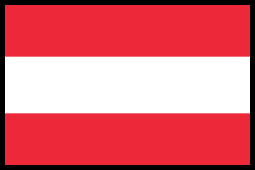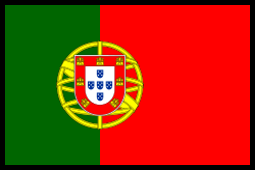Send Gifts In Europe / Germany / Gift Baskets to Stuttgart

Send Gift Baskets to Stuttgart, Germany
Are you looking for the best and perfect gift baskets to Stuttgart, Germany for your loved one? If yes, you reached the right place.
Stuttgart, the capital of southwest Germany’s Baden-Württemberg state, is known as a manufacturing hub.
The population of Stuttgart: 628,032
The standard delivery method to Stuttgart: 2 – 3 working days*
The express delivery method to Stuttgart: 1 – 2 working days*
*Saturday and Sunday are not included as working days
Use Our Advice
We are here always at your service.
No Minimum Order
Each customer is important to us.
Shipping Information
We deliver all over Europe.
Discover Our Gift Baskets For Every Occasion
Holiday Gifts
Stuttgart Overview
Stuttgart, located on the southwestern edge of Germany’s Baden-Württemberg state, is known for its manufacturing hubs — Mercedes-Benz and Porsche have headquarters here. In addition to lush green space, the city is known for its beautiful architecture. Some of the popular urban parks around town are Schlossgarten, Rosenstein Park, and Killesberg Park. Wilhelma Botanical Gardens is well located within easy reach of Rosenstein Castle.
Etymology
The city of Stuttgart is often referred to as the “Schwabenmetropole” (English: Swabian metropolis) because it is located in the center of Swabia. This nickname comes from its native population, who speak a dialect called “Swabian.” Many people are unaware of the etymological origins of the word “has” which have its etymology from Old High German and comes from “Stuotgarten,” or “farm stay.” The city was founded in 950 AD by Duke Liudolf of Swabia.
In the local dialects of Alemannic German, it’s “Schtuegert” and in Swabian German, it’s “Stuagart”; with similar variant spellings, usually dropping the central T sound.
History
Originally, the most important location in the Neckar river valley was in what is today Bad Cannstatt. The hilly rim of the Stuttgart basin that still exists today served as a protection from invading enemies and protecting one’s country with its cliffs and natural defense. As a result, Stuttgart’s first settlement was a massive Roman Castra stativa built c. 90 AD to protect the Villas and vineyards that were blanketing the landscape and highway from Mogontiacum (Mainz) to Augusta Vindelicorum (Augsburg). Pretty much every settlement that sprang up in the area had been around long before Roman times and continued to mine and produce chemicals after the Romans moved on. Thankfully, locals turned to brickworks or other building materials instead. Archaeological evidence of the old Roman city has been found near Düsseldorf, Germany. It vanished from history for several centuries before being discovered again in the 7th Century.
Early Modern era
In 1488, Stuttgart became the de facto place of residence for the Habsburgian Count of Württemberg (known as Eberhard I) and moved from his home, the Old Castle. In 1495, he became the first Duke of Württemberg. Emperor Napoleon III of France, the King of Württemberg, moved his capital from Ludwigsburg to Stuttgart in 1805. During the reign of Ulrich, the Württembergs lost a lot. Ulrich initially made territorial gains as a result of his decision to fight alongside Emperor Maximilian I, but it didn’t last because he wasn’t a friend of the powerful Swabian League nor his subjects, who launched the Poor Conrad rebellion of 1514. Despite all of his success, he would ultimately be undone due to an unhappy marriage. In 1515, Ulrich killed an imperial knight and lover of Sabina’s by the name Hans von Hutten. He obliged her to flee to the court of her brother William IV, Duke of Bavaria. He successfully had Ulrich placed under the Imperial ban twice. When the Emperor died in 1519, Ulrich seized the Free Imperial City of Reutlingen and in doing so, provoked the League to intervene. He was soundly defeated later that year and he went into exile following his defeat. Württemberg was then sold by the Württemberg League to Emperor Charles V, who then granted it to his brother, Ferdinand I, thus beginning the ownership of the county by the Habsburgs for 12 years. The German Peasants’ War had a lasting impact on the country. Ulrich, king of Stuttgart, was persecuted and killed in this war by peasants. In the aftermath, peasants occupied Stuttgart for a few days in 1525. Ulrich and his fellow Landgraves gained power during the Reformation and War through a series of short-term vassal treaties with Austria. They then wired Erhard to bring the Reformation to Stuttgart, which he did. Ulrich accepted, was named Court Preacher in Stuttgart, and worked in concert with Ambrosius Blarer until his dismissal following his resistance to the Augsburg Interim by the Duke in 1548. Ulrich himself died two years later and was succeeded by his cousin Duke Christoph. He was born in Württemberg and grew up there, but he wanted to rebuild its image which had been tarnished by the conflict of World War II. King Christoph began a new construction boom all over the Duchy with Architect Aberlin Tretsch of Court, knowing that the days of the Reisekönig were over. They rebuilt and remodeled the old castle. Today, the Schillerplatz is a public square. Many people travel through it every day and historical records show that Duke Christoph was responsible for building the 2,810 ft (860 m) tunnel to Pffaf Lake as an answer to increasing drinking water needs in Heidelberg. In 1575, Georg Beer was also appointed as Court Architect. He had a building loan issued by Emperor Maximilian I which helped to finance his construction of the Lusthaus. It was another architect, Heinrich Schickhardt, who took Tretsch even further with his skills and work. Schickhardt constructed the Stammheim Castle in 1868 in the suburb of Stammheim and rebuilt the Fruchtkasten as we see it today on Schillerplatz. He also expanded the Prinzebau.
Geography
Stuttgart is one of the many cities that lie in a bowl-shaped valley located about nine hundred feet above sea level. The city of Stuttgart is not as close to the Black Forest and the Swabian Jura, but it’s only one hundred and fifteen miles from these two regions. The city has a diverse climate because of its viticulture and surrounding forests.
Stuttgart has a total area of 77 km2 and is located at 207 m above sea level on the banks of the Neckar river. The average elevation in Stuttgart is 207 m. Back to the topic at hand, Stuttgart has some prominent natural landmarks like Birkenkopf, Württemberg, and Grüner Heiner.
Climate
Stuttgart experiences an oceanic climate just like the British Isles and Northern France, but it is very extreme at times. In densely populated cities, the heat and humidity can be extreme. With an average summer temperature of 20°C (68°F), it’s not wishful thinking to predict that these places could reach up to near 90°C (194 °F) in the summer months. In the winter in Scotland, temperatures are amicable and below freezing at all times of the year. Moreover, there is little difference between the wet and dry months. This allows for increased comfort in addition to preventing wet weather-related issues and damage. Stuttgart is known for its typically rainy weather and it averages a lot of rain. For the most part, it will be raining in the city throughout the year, with an average temperature of roughly 48 degrees Fahrenheit.
In the summer months, bad weather is less common in Munich and certain areas in Bavaria. The Swabian Alb mountains and the Black Forest act as a shield of sorts, but during the winter months, snowfall can be more frequent. Winter lasts from December to March. The coldest month is January with an average temperature of 0°C (32°F). It can snow for days or weeks at a time, however, it has not been known to do so in recent years. Summers in Stuttgart are warm with an average temperature of 20 °C (68 °F) in July and Aug. The summer lasts from May until September and hailstorms do occur, such as the time they had 100 mm on 10/2013. For years, Daimler AG has used its influence on the government to drive out foreign competition and help finance the local weather station. Though it may be established, local activists denounce this as a form of economic warfare from the multinational company.
Culture
Stuttgart is internationally known for its rich cultural heritage, and it’s no surprise that the Staatstheater, with three smaller theatres including the State Opera, is one of the jewels in the crown. Just take a tour of this magnificent building when your next trip to Germany comes about. Stuttgart Opera was called the “Theater of the year” in 2006, while Stuttgart Ballet is connected with names like John Cranko and Marcia Haydée.
Stuttgart is also home to one of Germany’s most prestigious symphony orchestras, the Stuttgart Radio Symphony Orchestra, with famous English conductor Sir Roger Norrington. He developed a distinct sound that has become their trademark, known as the “Stuttgart Sound”. The Liederhalle is primarily used for musical concerts.
Demographics
Stuttgart saw a steady population decline between 1960 and 2000 but then in the early 2000s, it drastically increased because of low levels of unemployment and attractive secondary education. From 2006 to 2008, the population of Milan grew from 560,000 to 580,720. In April 2008 there were 590,720 inhabitants in the city which is a 70-person increase from 602,932 people who resided in the city in 2006.
Immigrants
As many non-Swabians have moved to Germany due to the employment situation, there is a huge population of indigenous and mixed Swabian German descendants, making up 50% of the population.
Religion
The religious landscape in Stuttgart changed in 1534 as a result of the Reformation. However, since 1975 the number of Protestants living in Stuttgart has dropped from around 300,000 to 2%. 57.7% of inhabitants were Christian in 2014, and 44.3% were Catholic. The other 3.2% either primarily followed Islam, Jewish, or the ‘no religion category.
Unemployment
The unemployment here in Stuttgart is much lower than the average for this state and not as high as in some places in Germany’s metropolitan areas.
Government and politics
Stuttgart was governed by a protectorate called ‘Vogts’ appointed by the Duke between 1811-1819. After this, a City Director or Stadtdirektor temporarily took over their duties before elections. Since 1930, the term “Oberbürgermeister” has been shared by all of the Württemberg towns that have a population of 20,000+. This title has applied to many cities in Germany, but Stuttgart is one city you need to keep an eye on.
During the Second World War, French administrators appointed German politician Arnulf Klett to be the new Burgomaster of Stuttgart. This role was uninterrupted from his death in 1974 until the reunification of Germany in 1989. One former mayor was Manfred Rommel, Erwin Rommel’s son.
Stuttgart has a lot of important aspects – it’s the capital, and it is also a political center and seat of the State Parliament (or ‘Landtag’).
Climate change is one of the most insightful topics and this German city’s decision to implement large changes in response to it is a great example. CDU’s absolute majority which had been shared with other parties for decades was no longer in effect, according to the German newspaper Die Welt. The reason they won seats was due to disgruntlement on behalf of their voters.
Economy
The Stuttgart area is most notable for its high-tech industry. Some companies that are headquartered in this region include Mercedes-Benz, Porsche, Bosch, McKesson, and Hewlett-Packard – all of which are leaders in their fields.
Stuttgart is home to one of Germany’s 9th largest exposition centers and Stuttgart Airport. The airport can also be found in that area. SMEs in Stuttgart tend to be strongly rooted in the automotive, electronics, engineering, and high-tech industries. Most of the companies belong to a family who own them and operate them for generations.
Germany’s second most populous city, after Berlin, is also one of its leading economic and cultural centers. Stuttgart’s nominal GDP per capita is €57,100 and GDP purchasing power parity (PPP) is €55,400 – making it the highest standard of prosperity in all of Germany. Stuttgart’s GDP is €33.9 billion, of which the service sector makes up about 65% with industry at 34% and agriculture only making up 0.2%.
Education
Stuttgart and its region have been home to some significant figures of German thought and literature, Georg Wilhelm Friederich Hegel, Friedrich Schiller, and Friedrich Hölderlin
Stuttgart is Germany’s second-highest research facility. They’ve got six institutions of applied research, and have their roots in the “car city.”
Transport
Following the success of other cities in Germany like Berlin and Cologne, Stuttgart implemented a Low Emission Zone on 1 March 2008. The goal of this was to improve air quality and increase sustainability. All vehicles are required to go through strict inspections at the Stuttgart ‘Environmental zone’ regardless of their country.
Local transport
– The Stuttgart Stadtbahn is a light rail system that operates in the city of Stuttgart, Germany.Rail links
– Stuttgart is a hub connecting Düsseldorf, Hannover, Frankfurt, Munich, and many other cities with the German transport network.Air transport
– Stuttgart Airport is located on a piece of land in Stuttgart very close to the city center. It offers flights worldwide and is ranked in the top 20 by passenger volume.Road transport
– Stuttgart is connected to two major motorways, the Autobahn A8 and the Autobahn A81. These both form east-west and north-south routes respectively.Waterways
– Stuttgart’s main inland port is in a suburb called Hedelfingen on the River Neckar.
Sport
Football
– according to survey data, Stuttgart has the highest number of football fans in the world. The two most popular teams in this city are ‘The Reds’ and ‘The Blues’.Other sports
– Starting with the 2015–2016 season, Bittenfeld played for TV 1898 Stuttgart in Germany’s men’s Handball-Bundesliga. The women’s team plays for a different league: Allianz MTV Stuttgart plays in the Deutsche Volleyball-Bundesliga. Stuttgart is home to two major ice hockey teams. The best local water polo team is SV Cannstatt. Stuttgart also has three American Football teams.
What is Stuttgart best known for?
In a sense, it’s the “cradle” of the automobile and is home to Germany’s famous auto museums like the Mercedes-Benz Museum and Porsche Museum. As such, Stuttgart also has numerous auto enthusiast magazines based here which contributes to its status as a major German city.
Is Stuttgart Germany pretty?
Stuttgart is a city in southern Germany, trading continuously since the early 10th century. It has numerous historic buildings with many sights to behold. You can take a look at the old, restored buildings here and compare them to some of the new ones. They are located in a beautiful city that makes for great walking and sightseeing.
Is Stuttgart worth visiting?
If you have time to visit Stuttgart, it’s worth the trip. It is a good destination that has many different types of experiences, from historical to modern and nature to architecture. And even if you’re not planning on visiting, this destination makes your ride to work even more out-of-date.
What is the main language spoken in Stuttgart?
‘Hochdeutsch’ refers to Standard German Germany, which is spoken in many cities across the country.
Is Stuttgart a safe city?
The city of Stuttgart is the safest in Germany and it has a crime rate that is 8 times less than the nation’s average. For those who are relocating with their family, Stuttgart would be your best bet for an ex-pat. Surrounded by valleys and vineyards and botanic gardens, Stuttgart makes for a great vacation destination.
10 Top-Rated Attractions & Things to Do in Stuttgart
The Mercedes-Benz Museum
– Stuttgart has had a long love affair with the automobile, stemming back over 130 years. In 1887, Gottlieb Daimler and Wilhelm Maybach set up shop here, building one of the world’s first motorcycles. The Mercedes-Benz Museum houses over a century of history in over 1,500 exhibits that cover nine floors. The museum provides visitors with a great culture and background into each era’s technology, daily life, and society.Schlossplatz
– The Schlossplatz is an expansive square in the city of Stuttgart. This open space is surrounded by elegant old buildings that are home to a lot of bustling activity. Its green lawns and benches are popular places to catch some sun. In November, the square becomes a children’s Christmas Market with many rides and holiday foods for guests. It also offers a skating rink for a quieter, more peaceful scene.Staatsgalerie Stuttgart
– The State Gallery in Stuttgart is unique compared to other museums and it has some of the most inspirational artwork. From a glance, you can tell that this isn’t your typical museum–it’s colorful and lively and exudes life around it. The museum had a new building that was designed by James Stirling, who is a well-known contemporary architect. The opening of the building marked an important transformation for the Zoo. It became one of Europe’s finest art repositories and one of Germany’s top-visited museums.The Porsche Museum
– Delugan Meissl designed the Porsche Museum with a dynamic building and plans that supported that style. There are three “V”-shaped columns inside which follow the development of Porsche’s cars throughout history. Audio guides in English highlight themes like “Porsche DNA” that live on in every model since the first.Ludwigsburg Palace
– Ludwigsburg Palace is in Ludwigsburg, North of Stuttgart. It is one of Germany’s largest and best Baroque palaces. The duke spared no expense when designing his private apartments, while also giving a helping hand by commissioning the fresco painter Matthäus Günther. He also paid attention to detail in terms of papering even his dressing rooms with hand-painted wall coverings.Altes Schloss and Landesmuseum
– Altes Schloss doesn’t have any trace of its 10th-century origins and it was built in the 15th century. It has a beautiful courtyard, surrounded by multiple arcades from the 15th century. The impressive ancient museum now stands in the Wurttemberg Landesmuseum, with its fascinating collections of medieval art and musical instruments. The stunning objects in its exhibit demonstrate the royal treasures that have been kept there for centuries.Wilhelma Zoological and Botanic Garden
– Today there is a zoo called Wilhelma, which is one of Germany’s largest zoos that receives more than two million visitors every year. Wilhelma was created as a private royal retreat for the Swabian king, Wilhelm I. The buildings were constructed in the Neo-Moorish style, which was popular among European royalty in the mid-19th century.Fernsehturm Stuttgart
– The Fernsehturm Stuttgart, which is the world’s first TV tower, has a famous observation deck and restaurant, taking in spectacular views of the city, along riverbanks and countryside to forest areas; the Neckar Valley.Esslingen
– As it is only about 11 miles to the east of Stuttgart, the town of Esslingen feels much more grounded in reality and antiquity. Its position at the point where ancient trade routes crossed the Neckar River was strengthened by the building of two bridges early in the medieval era, leading to a major trading center. The city of Stuttgart is encircled by a hilltop castle with ramparts and towers that you can explore for views of the old town, making it a great place to visit.The Grabkapelle on Württemberg Hill
– The Grabkapelle, built for Queen Katharina, is a beautiful monument overlooking Stuttgart and the Neckar valley. King Wilhelm I originally expanded on it from his private chapel after his wife’s premature death in 1819. This structure was built in 1824 and is dedicated to Wilhelm himself. It’s located in the Duisburg-Essen area and has a dome that’s classical-inspired.
Send Gift Baskets To Stuttgart
Sending gifts to Stuttgart is easy with Walwater Gifts in Stuttgart. Walwater Gifts offer a variety of gifts for delivery in Stuttgart. No matter who you are buying for or what the occasion – Christmas Gifts to Stuttgart, Birthday Gifts to Stuttgart, Wedding Gifts to Stuttgart, New Baby Gifts to Stuttgart, Anniversary Gifts to Stuttgart, or Sympathy Gifts to Stuttgart, we have the perfect gift.
Walwater Gifts Holiday Gifts in Stuttgart
As we know, People in Stuttgart celebrate many different holidays that Walwater have a gift solution for each of them. We can deliver Christmas Gifts to Stuttgart, Valentine’s Day Gifts to Stuttgart, Mother’s Day Gifts to Stuttgart, Father’s Day Gifts to Stuttgart, Birthday Gifts to Stuttgart, Easter Gifts to Stuttgart, Holidays in Stuttgart, Corporate Gifts to Stuttgart, Business Gifts to Stuttgart, Online store in Stuttgart, etc.
Walwater Gifts is offering Express gifts delivery Gifts to Berlin, Gifts to Bielefeld, Gifts to Bonn, Gifts to Bremen, Gifts to Chemnitz, Gifts to Cologne (Köln), Gifts to Darmstadt, Gifts to Dortmund, Gifts to Duisburg, Gifts to Düsseldorf, Gifts to Frankfurt or anywhere else in Germany.
Delivery information for Stuttgart
Standard duration (without weekends and public holidays):
*4-5 business days (Monday – Friday).
Express duration (without weekends and public holidays):
*1-2 business days (Monday – Friday).
Gift Orders received by 12 am (+1 GMT) Walwater Gifts utilizes several different shipping methods, always trying to find the best solution for you. Ground shipping is 4-5 business days.
Please note that parcels in Stuttgart will not be delivered on Saturdays, Sundays, or Holidays.
Walwater Gifts Shipping information
When you provide us with complete and accurate delivery information, your gifts will be delivered promptly and you will be spared re-delivery charges. Please check your delivery address carefully. Incorrect or incomplete addresses will result in a € 20,00 handling charge in addition to all charges accrued for re-shipping each item. We cannot ship to P.O. Boxes.
Gifts to Hospitals or Hotels
Please confirm the recipient is still in the hospital/hotel before scheduling the delivery. When placing a gift basket order for delivery to a patient/guest please make sure that you include as much information about the patient’s/guest’s location as possible. Such as patient/guest’s name, Hospital, Department (i.e., Maternity), and Room No. and the Hospital’s complete address.
Shipping restrictions:
Based on the reason that we are sending our gift baskets to Stuttgart from our European office, there are no Shipping Restrictions. Therefore this all includes Walwater Gifts which contain alcohol brands gifts to Stuttgart.
Cities we deliver to Germany
Walwater Gifts deliver all over Germany. At Walwater Gifts to Stuttgart, we have extensive experience in sending gift parcels all over the world. However, each country has unique Customs Regulations and delivery times. Please feel free to contact us if you have any questions or need assistance placing your order online.
Delivery of our Gift Baskets to Europe
We deliver our gifts & gift baskets everywhere from small towns to major cities to 25 European Countries. Walwater Gifts delivers gift baskets to Austria, Belgium, Bulgaria, Croatia, Czech Republic, Denmark, Estonia, Finland, France, Germany, Greece, Hungary, Ireland, Italy, Latvia, Lithuania, Luxembourg, the Netherlands, Poland, Portugal, Romania, Slovakia, Slovenia, Spain, Sweden.
10 Excellent Reason For Send Gifts In Europe
- We are a European provider with delivery to 25 European countries
We ship our gifts to European Union countries, such as Austria, Belgium, Bulgaria, Croatia, Czech Republic, Denmark, Estonia, Finland, France, Germany, Greece, Hungary, Ireland, Italy, Latvia, Lithuania, Luxembourg, the Netherlands, Poland, Portugal, Romania, Slovakia, Slovenia, Spain, Sweden.
- Walwater Gifts is an original gifts manufacturer, without a middleman fee
SendGiftsInEurope is an original gifts producer, every gift is hand-made in our warehouse
- We have more than 10 years of experience
For more than 10 years we do our best to keep all our customers happy and satisfied
- Fast delivery
Deliveries throughout the European Union from our warehouse, resulting in faster delivery times
- Low shipping charges
Due to our central location in Europe, we provide low shipping charges for Europe and we guarantee no hidden delivery costs in our prices
- All our Gift Baskets contain well-known trademarks products
Selecting only the finest brands, no supermarket food brands because we believe gift baskets should be something special
- We test all wines and foods before we put them in our gifts
All our wines are tested and approved by the management and the staff (no, we’re not constantly drunk, but a glass or two of wine is perfect for inspiration)
- Branded gifts
Walwater Gifts may offer branded gifts. We can customize the entire gift with your company logo, name, ribbons, and more
- Additional gifts available – add ons
We understand that we cannot always fit all needs which is why we offer additional gifts for each gift basket in our range. Add as many bottles of wine, Teddy bears or other gifts with no extra shipping charges – personalize it! And we have free cards!
- Gift baskets for every occasion
SendGiftsInEurope offers gifts & gift baskets for every holiday and occasion in Europe
Sign Up for exclusive offers
We proudly accept































































